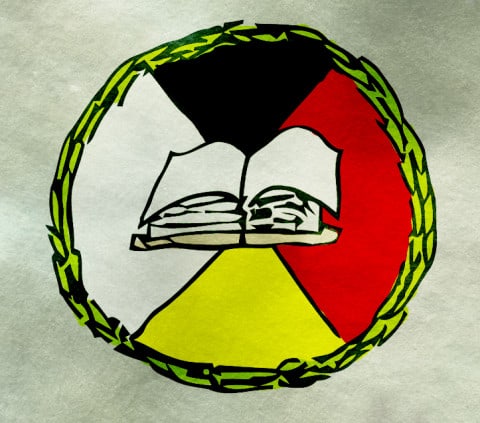On Jan. 21, 2016, just 10 days before a call-to-action deadline set by the University of Saskatchewan Students’ Union, the University Council formally responded in favour of a motion calling on the institution to implement Indigenous content in all degree programs. The University Students’ Council supported this commitment unanimously during a vote in November 2015.
Indigenous Students’ Council president Feather Pewapisconias began work on the initiative a couple of years ago before sitting down with the USSU to discuss the next steps.
ago before sitting down with the USSU to discuss the next steps.
After the motion passed in November, the work of lobbying the university administration and its council began — a task USSU president Jack Saddleback credits to Gabe Senecal, vice-president academic affairs, as instrumental in accomplishing.
While there was no severe pushback, Saddleback admits there were challenges.
“I think there’s a hesitation in regards to how this can be implemented, but all in all, you know, we’re very confident that the U of S can pave the way to be able to show the rest of Canada this is how you can do it.”
In accordance with the Truth and Reconciliation Commission’s calls to action that pertain to post-secondary institutions, incorporating Indigenous knowledge and teaching methods is a powerful means of righting past-and-current wrongs.
As the antithesis of the abusive and genocidal residential school system, this is a significant step toward reconciliation with Indigenous students that Saddleback says might also equip non-Indigenous students with an appropriate framework for understanding.
“We have huge benefits in this regard. When you look at just getting the real history of Canada, it’s going to be able to start to break down the stereotypes, the stigmas [and] discrimination that are faced by Indigenous peoples here in our country. We’re going to see some social change actually happening,” Saddleback said. “We’re honestly going to see a better outlook for our future because at the end of the day, when we have graduates leaving the university here, we not only want to send out good students, we want to send out good citizens.”
Patti McDougall, vice-provost teaching and learning and University Council member at the U of S, builds on Saddleback’s sentiment, citing a need for historical and cultural understanding when students enter the workforce.
“Those working as health care professionals need to have a comprehensive knowledge of the health needs of the Aboriginal people of Canada, with a focus on understanding such things as the history and legacy of residential schools. In response to [the TRC’s] calls to action, the U of S has a role to play and a responsibility in building reconciliation. This responsibility will be a driver in bringing about changes in academic programming,” McDougall said in an email to the Sheaf.
The U of S is among the first in Canada to work on implementing such measures, which Saddleback considers a point of pride for the university.
“We’re very confident that we’re going to be a leader in regards to Indigenous content and just recognizing our Indigenous peoples of this area and of this nation. And we have a spotlight on us as a university with the Building Reconciliation conference,” he said.
Building Reconciliation was a national forum hosted by the U of S from Nov. 18–19, 2015.
Moreover, Saddleback points to the co-operative nature throughout this initiative as a reason for its success.
“We’ve had a lot of support from inside the organization, and from outside the organization as well. The student body is stepping up and making the change and we’re looking forward to the future.”
McDougall acknowledges that the initiative under development by the U of S is different from other universities that simply require each student to take an Indigenous studies class.
“The U of S is far too big and far too diverse for this approach to work for us. Each college will need to implement an approach that fits for their programs,” she said.
As reconciliation catches on across the country, Saddleback voices what he believes many are likely thinking.
“There’s a new understanding of just the actual respecting of Indigenous rights, and it’s fantastic to know that all of this change is taking place, and … we’re just more than grateful to be a part of that change.”
—
Patty Hails
Graphics: Jeremy Britz / Graphics Editor